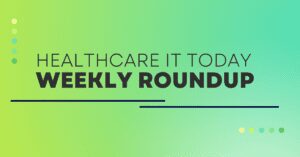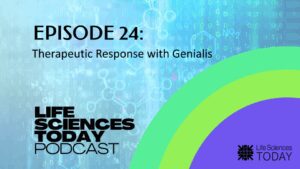We’ve talked about identifying and addressing population health challenges before, but with it being such a wide topic — there are still plenty of areas that need discussion. Today we are going to focus in on the payer/provider side of population health challenges. We reached out to our wonderful Healthcare IT Today Community to ask — what technologies are being used to enhance collaboration between payers and providers in identifying and addressing population health challenges? The following is what they had to share.
Elevsis Delgadillo, SVP, Customer Success at KeenStack
Technologies like Innovaccer provide a unified data platform that integrates EHRs, claims, labs, and social determinants data into a single patient record. Solutions like this enable payers and providers to identify at-risk populations and implement targeted interventions. Innovaccer was recently selected to support California’s Population Health Management Initiative (PHMI) to help community health centers provide patients with the highest level of care possible. This was a significant step forward in helping providers deliver a coordinated full picture of a patient’s care. When providers can see the full picture of a patient’s health journey, collaboration becomes truly impactful.
Sally Else, President at Mphasis Javelina
Effectively managing population health requires a collaborative ecosystem where both payers and providers can access and act on comprehensive patient and community-level data. A range of enabling technologies is supporting this collaboration, from unified data platforms to advanced analytics and care orchestration tools.
Central to this is the use of integrated data lakes that bring together claims, clinical, social determinant, and behavioral health data. These platforms allow for the generation of 360-degree views of patient populations, facilitating the identification of at-risk cohorts and the tailoring of intervention strategies. Payers and providers can jointly track utilization patterns, chronic disease prevalence, and preventive care adherence. Geospatial analytics tools are also being applied to identify health inequities at the community level, enabling resource planning based on zip-code-level trends.
At the same time, AI-powered tools help in early detection of trends such as readmission risks or prescription non-adherence, triggering timely outreach and support. Cloud-based solutions are increasingly being used to streamline collaboration by enabling secure, role-based access to shared dashboards and care plans. Such platforms enhance transparency, support joint decision-making, and reduce duplication of efforts. Organizations with deep experience in healthcare data integration have implemented platforms that not only support risk stratification and care management but also embed real-time triggers and alerts within workflows. These capabilities ensure that insights are not just retrospective but actionable.
The net impact of these technologies is a more aligned ecosystem, where payers and providers are working from a common set of insights to drive measurable improvements in community health. As population health continues to be central to value-based care strategies, the role of such collaborative, tech-enabled infrastructure will only grow in importance.
Basia Coulter, Partner, Healthcare and Life Sciences at Globant
Technologies like Salesforce Health Cloud are revolutionizing collaboration by providing a unified platform where payers and providers can access and share patient data, care plans, and communication tools. This centralized approach facilitates coordinated care, especially for managing chronic conditions across populations. Additionally, AI, including generative AI, plays a role in analyzing social determinants of health, predicting health trends, and personalizing patient outreach. For instance, Salesforce’s Agentforce for Health utilizes AI to automate tasks like scheduling and eligibility checks, enhancing efficiency in care delivery.
The increasing sophistication of dedicated mobile apps and direct integration with consumer wearables offers another layer. These aren’t just about sharing data with the patient but also about collecting patient-generated health data directly from them. This rich, real-world data can then be aggregated and analyzed for population health insights, providing a more complete picture of lifestyle factors, adherence, and early symptom changes outside of clinical settings.
Michael Gould, AVP of Interoperability Strategy at ZeOmega
FHIR APIs are being put in place by payers and providers to address case management across care teams, reduce administrative burden, and improve the quality of care. Case management enhancements are accomplished through payer or clinical data exchange and collaboration. Administrative burden is reduced through prior authorization and transparency of FHIR APIs. And quality of care measurement is achieved through specific data access patterns performed in bulk for patient populations. While the technology and data specifications are available, payers and providers must continue building trust and evolving workflows to ensure innovations yield benefits for both — and most of all — for patients and populations.
Courtney Yeakel, Chief Product Officer, Payer at Veradigm
Enhancing collaboration between payers and providers is critical in identifying and addressing population health challenges, and it starts with dynamic solutions to share patient data across key pillars of healthcare through trusted, integrated workflows. For example, technology that integrates care gap alerts directly into providers’ electronic health records allows payers to deliver patient-specific notifications within a provider’s existing clinical workflow. With the presentation of these alerts directly in providers’ day-to-day workflows, health plans can significantly reduce care gaps for their beneficiaries, leading to improved health outcomes, reduced costs, and higher quality of care.
All of these results have an impact on greater membership benefits and retention for health plans. With the seamless integration of actionable insights, providers are empowered to address risk and quality care gaps at the point-of-care, leading to enhanced clinical decision-making, stronger patient outcomes, and improved claims acceptance rates substantiated with a complete medical record. Moving forward, we’ll see a continued prioritization of opportunities to innovate, such as including social determinants of health, natural language processing, and transition of care alerts into streamlined workflows. When technology enables payers and providers to improve their collaboration, the healthcare ecosystem as a whole benefits.
Deb Jones, Senior Director, Insights Strategy at Tendo
Population health management has progressed from retrospective claims analysis to real-time, data-driven collaboration. Today, health systems and payers are leveraging integrated care management platforms, patient engagement tools, and advanced analytics dashboards that consolidate data from sources like EMRs, claims, pharmacy records, and social determinants of health. These technologies help align strategies by identifying population health trends, prioritizing at-risk groups, and evaluating intervention effectiveness.
A growing focus is on making population health insights actionable at the point of care, particularly during referrals and care coordination. Workflow-embedded tools and real-time data integration enable care teams to intervene proactively, ensuring timely, patient-centered care decisions. Intelligent analytics and prioritization engines also help surface high-risk populations, support accurate documentation, and measure both clinical and financial outcomes, driving more coordinated, value-based care delivery.
John Weir, Managing Director at BluePath Health
AI is rapidly becoming an indispensable tool for population health management. From stratifying patient populations to predicting high-risk patients in an effort to reduce adverse health outcomes, AI can build upon information shared between providers and payers to enable more precise and efficient resource allocation, targeted care, and patient engagement. For instance, using AI to automate time-consuming identification of patients who are eligible for a diabetes management program and using automation to reach out and enroll them, along with periodic communications to encourage participation and progress. This reduces administrative and operational burden, along with reduced time delays for patients who can benefit from more rapid intervention. At the payer level, improvements with care coordination and more rapid decision making in support of effective and quality healthcare.
Steve Callis, President of Payments at RevSpring
When payers and providers aren’t aligned, patients can feel it. They get multiple bills, unclear messages, and are uncertain about how to ask questions or take action toward their care plan. We’re seeing increased collaboration across the healthcare ecosystem to close those gaps — like securely sharing data, coordinating patient communication, and leveraging both print and digital tools to make the experience more personalized. That kind of care coordination takes work, but it directly influences whether patients take action in their healthcare.
Gary Singh, Senior Director, Product Management at Edifecs (recently acquired by Cotiviti)
Technology is transforming payer-provider collaboration from episodic data handoffs to continuous, real-time intelligence sharing. Key enablers include:
- EHR Integration APIs: Payers are now accessing structured clinical data directly from provider EHRs to complement their claims-based view, resulting in richer member profiles and improved risk stratification
- VBC Contract Performance Portals: Providers can log in to dynamic portals that track their performance on cost, quality, and utilization—benchmarking against contract targets and peer performance in near-real-time
- Utilization Upload Capabilities: Especially under capitation, payers are enabling providers to upload utilization data from non-claims sources (e.g., urgent care or post-acute visits) to enhance care planning accuracy
- Population Health Intelligence Platforms: These platforms synthesize clinical, financial, and SDOH data to surface actionable trends—such as rising-risk cohorts or high-impact care gaps—allowing both payers and providers to intervene proactively
The key is integration—not just of data but of purpose. Technology is now the connective tissue that enables both parties to act as stewards of population health, not just administrators of care. The most sophisticated implementations utilize AI-powered population health dashboards that provide both organizations with role-based views of shared populations, enabling coordinated intervention strategies and performance tracking.
These platforms incorporate quality measure automation, outcome prediction models, and intervention effectiveness tracking that help organizations continuously refine their population health approaches. Cloud-based analytics platforms with embedded collaboration tools allow distributed teams across payer and provider organizations to work together on population health initiatives, sharing insights and coordinating interventions in real-time regardless of organizational boundaries or geographic locations.
So many great insights here! Huge thank you to everyone who took the time out of their day to submit a quote to us! And thank you to all of you for taking the time out of your day to read this article! We could not do this without all of your support.
What technologies do you think are being used to enhance collaboration between payers and providers in identifying and addressing population health challenges? Let us know what you think over on social media, we’d love to hear from all of you!




